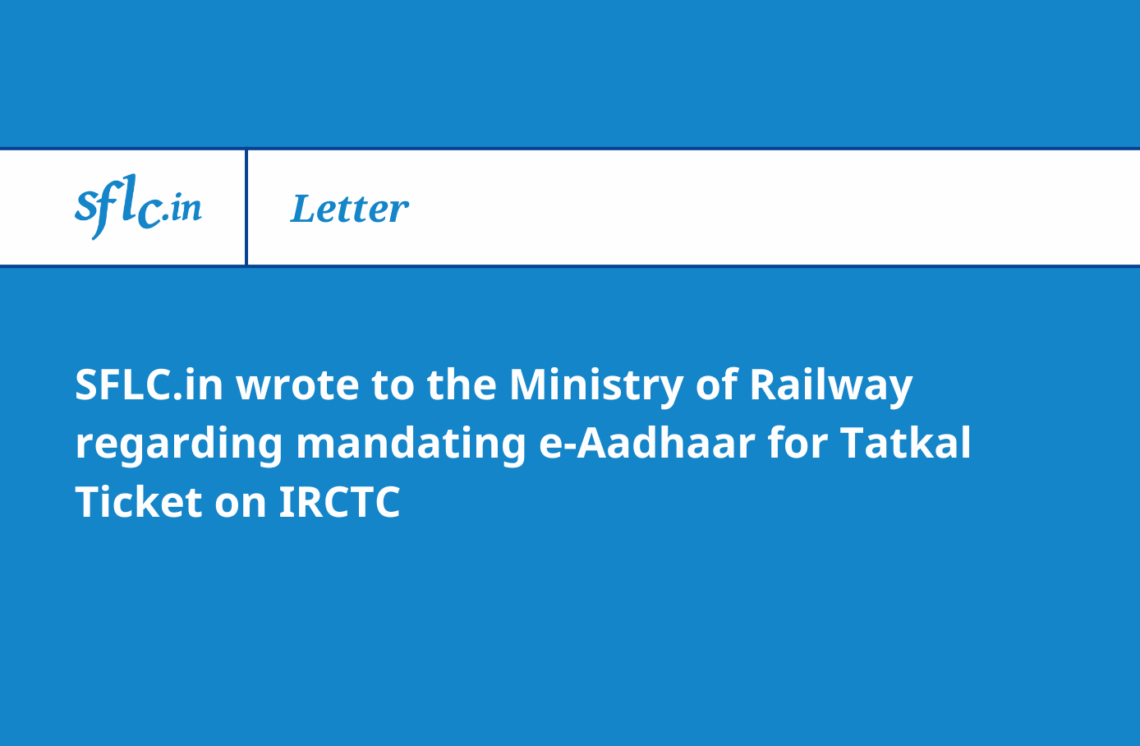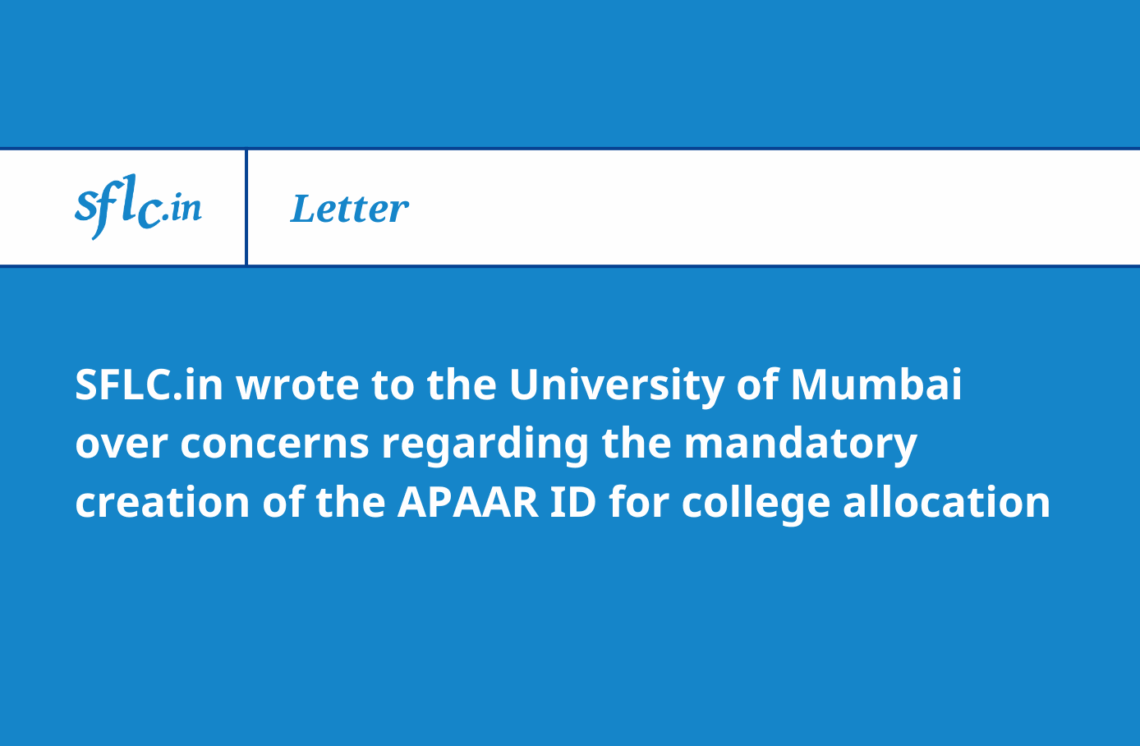The article analyzes the impact of the IT Rules, 2021 upon the case involving Twitter’s MD, the criminal law angle of it and the scope and relevance of safe harbour protection that is granted to online intermediaries in India.
[This article was written by Kushagra Sinha (Volunteer Legal Counsel, SFLC.in). It was first published on The Quint, on 24.06.2021. Link to the Article – https://www.thequint.com/voices/opinion/india-it-rules-twitter-chief-manish-maheshwari-up-police-loni-case-actions-options-ahead#read-more]
On 25.02.2021, the Indian Government notified the Information Technology (Intermediary Guidelines and Digital Media Ethics Code) Rules, 2021 (“IT Rules”). The IT Rules comprehensively regulate different sets of intermediaries and lay down the due diligence requirements which are to be followed by them. It also regulates Digital Media which includes regulating the dissemination of OTT and online news content. The IT Rules have garnered criticism for stifling free speech, undermining encryption and burdening intermediaries with harsh obligations.
Indian Government vs. Twitter
In the aftermath of passing of the 3 month deadline for Significant Social Media Intermediaries (SSMIs) to comply with the provisions of the IT Rules, the Central Government has made repeated statements through Twitter and media reports about how social media companies have or would lose their safe harbour protection.
The government was also seen squabbling with Twitter over the issue of non appointment of personnel as mandated under the IT Rules. In the backdrop of this situation, Ghaziabad police filed a case against Twitter, a few politicians and journalists, for sharing a video that was allegedly shared to create communal unrest or disturbance. This seems like a repeat of the Baazee.com saga where its CEO Avnish Bajaj was arrested for a pornographic clip which was put up for sale on the auction website.
Loni Assault Incident and Twitter
In what is being referred to as the “Loni assault case”, On 05th June, a video of an elderly Muslim man being physically assaulted by some miscreants/criminals went viral on the internet. Various social media intermediaries including Twitter were used as a platform to share the video with a certain description associated with it. Although the video did not have an audio, Ghaziabad Police subsequently issued a clarification which contained a certain narration of factual background and events.
Subsequently, Ghaziabad police filed an FIR against Twitter, The Wire, a few journalists and some politicians, accusing them of sharing the video with an intention to provoke communal unrest.
What the FIR States
The FIR reportedly charges the accused persons with Section 153 (provocation for rioting), 153A (promoting enmity between different groups), 295A (acts intended to outrage religious feelings), 505 (mischief), 120B (Criminal Conspiracy) and 34(Common intention) of the Indian Penal code, 1860.
The FIR alleges that the statements made through social media were done with an attempt to disturb communal harmony. It further alleges that despite Ghaziabad Police issuing a clarification on the issue, the accused persons did not remove the tweets and Twitter did not make an attempt to delete them.
Notice to Twitter’s MD
Twitter India’s Managing Director Manish Maheshwari lives in Bengaluru, Karnataka and is responsible for conduct of Twitter’s business in India. The notice for seeking his oral examination comes in the backdrop of a war of words between the Indian Government and Twitter, due to non-compliance with the provisions of the IT Rules on Twitter’s part.
It must be noted that just a few days after the deadline for SSMIs under the IT Rules was crossed, Twitter’s MD was questioned by a Delhi Police team in Bangalore on 31st May, in the ‘toolkit’ case. The questioning was related to Twitter’s policy about flagging tweets as “manipulated media”.
History of Notices Issued to Twitter
Earlier on 24th May, Delhi Police’s Special Cell had paid a visit to Twitter’s Delhi office and had given a notice to the company, seeking information on the basis of which it had classified Sambit Patra’s tweet as “manipulated media”. Subsequently, in relation to the Loni Assault case, the following notices were sent to Mr. Maheshwari by Ghaziabad Police:
First Notice (under Section 160 CrPC) – On 17th June, the Ghaziabad police issued a notice to Mr. Maheshwari, asking him to report at the Loni Border Police station and record his statement within a period of seven days. Mr. Maheshwari assured the police of his cooperation in the case and offered to join through video conference.
Second Notice 2 (Under Section 41A, CrPC) – On 21st June the Ghaziabad police issued another notice to Mr. Maheshwari to be present at the Loni Border Police station on 24.06.2021 at 10:30 am and record his statement in person. Mr. Maheshwari’s request for recording of his statement through video conferencing was rejected by the police.
Is it Within the Scope of Police’s Power to Request Physical Appearance?
First Notice (Section 160, CrPC) – The provision empowers the police to orally examine any person who is “supposed to be acquainted with the facts and circumstances of the case“. This means that according to Ghaziabad police, Twitter’s MD is a person who is acquainted with the facts and circumstances of the case and therefore his statement is essential for the police to complete their investigation.
Second Notice (under Section 41A, CrPC) – The notice under this provision is issued in cases where the arrest of a person is not required and against whom a reasonable complaint has been made, credible information has been received or a reasonable suspicion exists of a cognisable offence.
The Second notice issued to Twitter’s MD states that despite the Ghaziabad police tweeting through its official handle that the video in this case was “fake”, Twitter had failed to take any action from its end.
The Police is well within its power to ask any person to come and give a statement before it, as a part of an ongoing investigation. The timing and the implication of an intermediary in a criminal case does raise some concerns but procedurally there is nothing that indicates an abuse of authority or an infringement of a law or any right of any person involved with the case.
Can the MD Refuse to Appear?
If the Mr. Maheshwari refuses to cooperate with the police, the police can move to a court of law, seeking his custodial interrogation. His refusal to pay a visit to the police in this case may also be perceived as “non-cooperation” during the investigation which will work against him, in case he eventually needs to apply for bail in the matter.
One of the major grounds in granting bail or anticipatory bail is whether or not the accused person co-operated with the police during the investigation. Intentional non-compliance or disobedience of the notice may also invite a charge under Section 174 of the IPC, which is an offence punishable with jail term. It is unlikely that the police will arrest him at this stage if he complies with the notice and goes and talks to the police.
Can an Employee be held Legally Liable for the Company’s Actions?
The FIR has not named any employee of Twitter but it has named the two companies namely Twitter inc and Twitter India Communications India Pvt. Ltd.
The IT Rules mandate that every intermediary must appoint a chief compliance officer who shall be responsible in every court proceedings for non-compliance with the due diligence requirements under the Information Technology Act, 2000 (“IT Act”) and the IT Rules. The IT Ministry had earlier questioned Twitter for not complying with this provision. The government on one occasion also indicated that Twitter had lost its safe harbour as a consequence of non compliance with the IT Rules. It is unlikely that in absence of Twitter having appointed a Chief Compliance Officer, the Government will be able to prosecute the employee under the IT Rules.
Under the pre-existing framework of the IT Act, Section 85 talks about “Offences by companies”. It is a standard provision which is present in a lot of substantive statutes in India. It provides that for an offence committed by a company, every person who at the time of commission of the said offence, “was in charge of, and was responsible to, the company for the conduct of business of the company as well as the company, shall be guilty of the contravention“.
In the Avnish Bajaj Case, which led to the restructuring of the safe harbour framework in India, the Delhi High Court had found Bajaj liable under Section 85 and held that a prima facie case was made out against Bajaj and his website. The Delhi High Court’s decision was overturned by the Supreme Court in 2012, stating that as Bajaj or the website were not directly involved with the transaction, they could not be held responsible.
The “Offences by Companies” provision is rarely used by prosecuting agencies but it is a technical tool which can be used for attributing liability to a company’s employee. If the FIR implicates the accused persons along with a provision under the IT Act or the IT Rules, Maheshwari may be charged with Section 85 of the IT Act. The said provision has a wide ambit and at its worst, can also be used to implicate a number of people for an offence committed by the company.
Countering the police notice
Maheshwari cannot specifically prevent the police from sending him a notice as that is a decision that is at the police’s discretion. If the police feels it necessary to send a notice under Section 161 or Section 41A of the CrPC to a person, it is well within its rights and the procedure laid down by law to issue such notices.
What Maheshwari can do to protect his rights is to seek an anticipatory bail or a transit anticipatory bail. Anticipatory bail is sought when a person is apprehending arrest by the police and wishes to seek protection against such an arrest. A transit anticipatory bail is a specific type of anticipatory bail which is granted to a person who is apprehensive of being arrested in a different state. It is granted by a court which does not have the jurisdiction over the place where the offence was committed. This limits the power of police of another state (in this case being Ghaziabad Police) to arrest a person where he or she is presently situated.
Maheshwari can move a transit anticipatory bail application before a court in Karnataka. In the unlikely event of Ghaziabad police seeking his arrest, this will prevent him from being put behind bars.
Possible defences before a court of law:
Mr. Maheshwari could approach a Court seeking a bail or try to get the FIR quashed. Some of the arguments that work in his favour are enumerated below:
- Naming an intermediary in an FIR throws safe harbour out of the window. The prosecution could counter it stating that Twitter has not complied with the new IT Rules and cannot claim safe harbour protection. The Court will then have to decide whether Twitter has complied with the Rules and whether Twitter enjoyed safe harbour protection.
- The primary allegation in the FIR is that the accused persons circulated the video of the incident without checking and inquiring into the veracity of the facts surrounding the video. A charge on individuals who shared the video is baseless without establishing a criminal intent. In respect of Twitter, the allegation holds no ground in light of the principles laid down in the Shreya Singhal judgment where the Hon’ble Supreme Court categorically said that a platform cannot sit in judgment with respect to the legality of the content. The Government could have sent a takedown order under Section 69A of the IT Act to get the tweets removed.
- The element of misinformation or spreading communal harmony is premised on the findings of the Ghaziabad police which are subject to be challenged or certified before a court of law. In absence of a court ruling upon the veracity of facts, the merits of the case will only be decided based upon the final investigation. Since the facts aren’t validated, any action against any party, including the Twitter MD, would be premature at this stage.
- Sheer impossibility of content takedown – despite making best efforts, Twitter or its employees could not have obtained the veracity of the claim as millions of posts are shared on their platform every single day.
- Since facts are not yet established, even if safe harbour is thrown out of the window, despite his best efforts an employee of Twitter could not have ascertained the facts of the case. If the facts are as they were reported (which have not yet been proven otherwise in a court of law) removing the post would be a violation of free speech of users, something that Twitter takes great pride in protecting and is an essential element of its right to freedom of trade and profession under Article 19(1)(g) of the Constitution of India.
How This Case Impacts Safe Harbour?
Safe harbour is not a protection that is granted or bestowed upon an intermediary by the government or any other agency. It is an inherent defence that is available to an intermediary in respect of incurring liability arising out of third party content.
A unilateral declaration from the Government or any of its representatives to the effect that an intermediary’s safe harbour was gone, is nothing beyond making an argument, and the validity or soundness such an argument will be decided before a court of law.
It is impossible to blame the head of a social media intermediary for one among millions of posts that are exchanged on a daily basis upon its platform. One of the reasons safe harbour exists is the sheer absurdity of consequences that would crop up if such protection was not available with the intermediary. The Government with its actions seems to be trying to make an example out of Twitter but even that example is flawed and bad in law.
The outcome of this investigation and the court case will have a significant impact on the way the internet is regulated in India. IT Rules have received heavy criticism from different quarters, including the UN Special Rapporteur on the promotion and protection of the right to freedom of opinion and expression, who wrote a letter to the Indian Government, urging the government to withdraw, review or reconsider certain key aspects of the IT Rules.
In light of the mounting criticism within India and outside, the Government should tread carefully and ensure that internet regulation in India is not bereft of protecting free speech online and it also creates a fair and inclusive environment for all the stakeholders.




